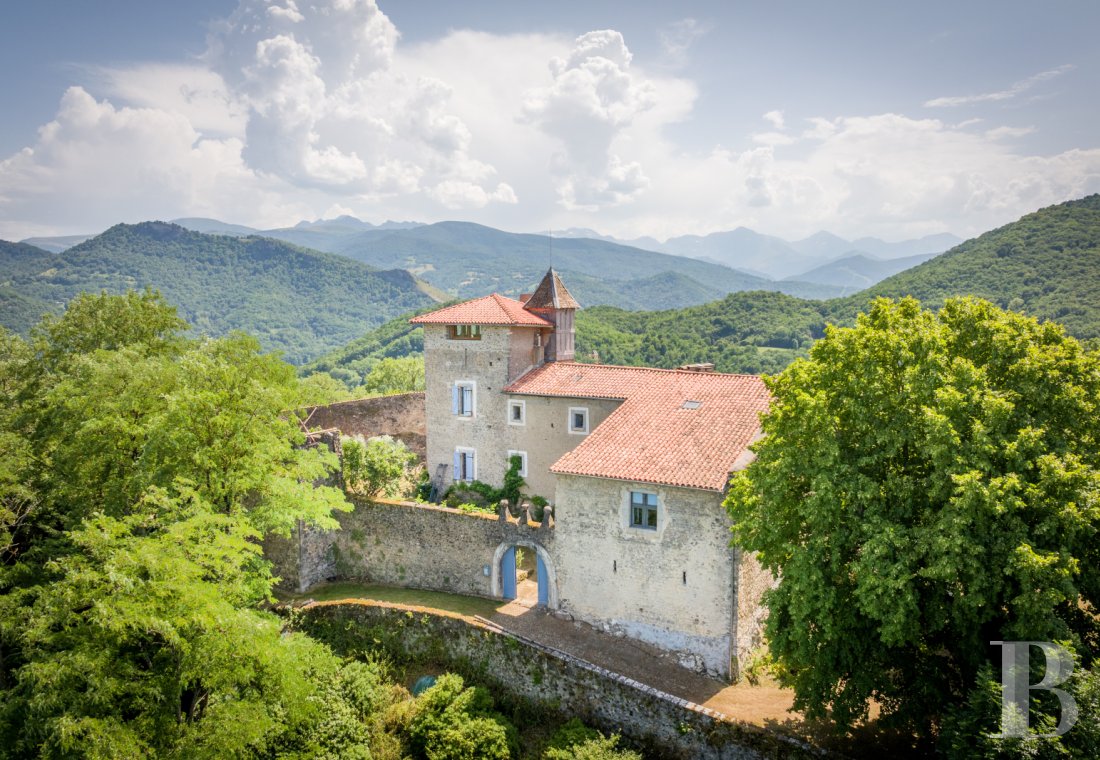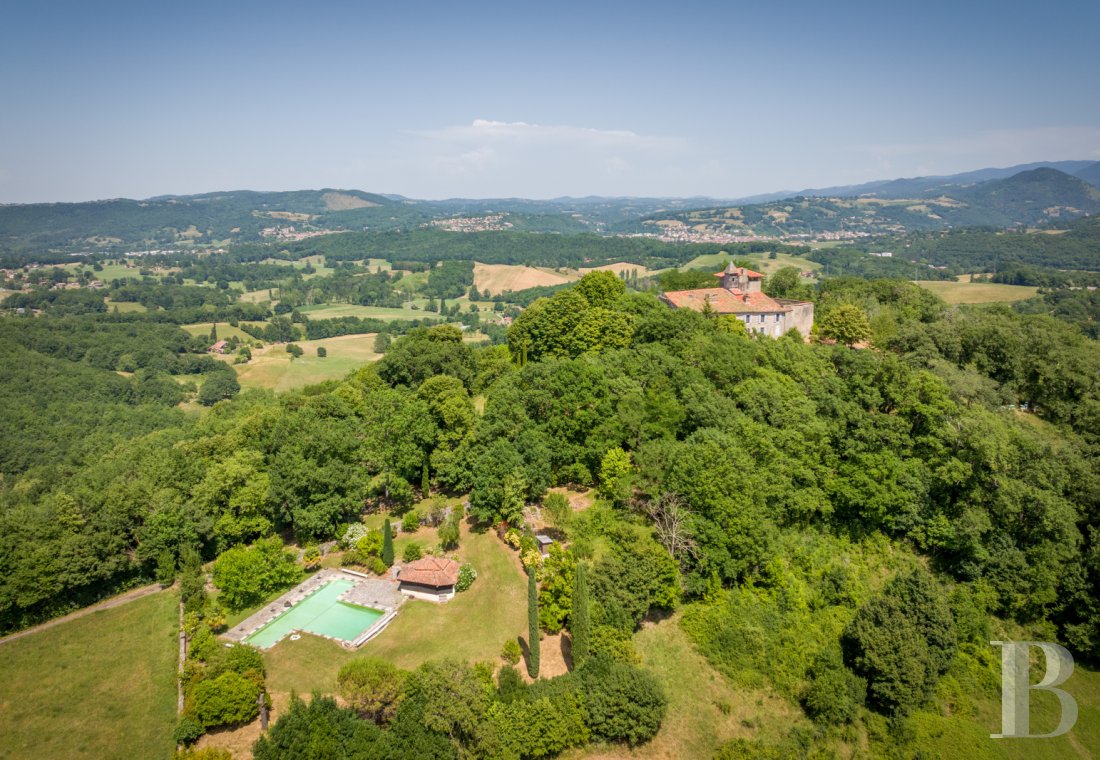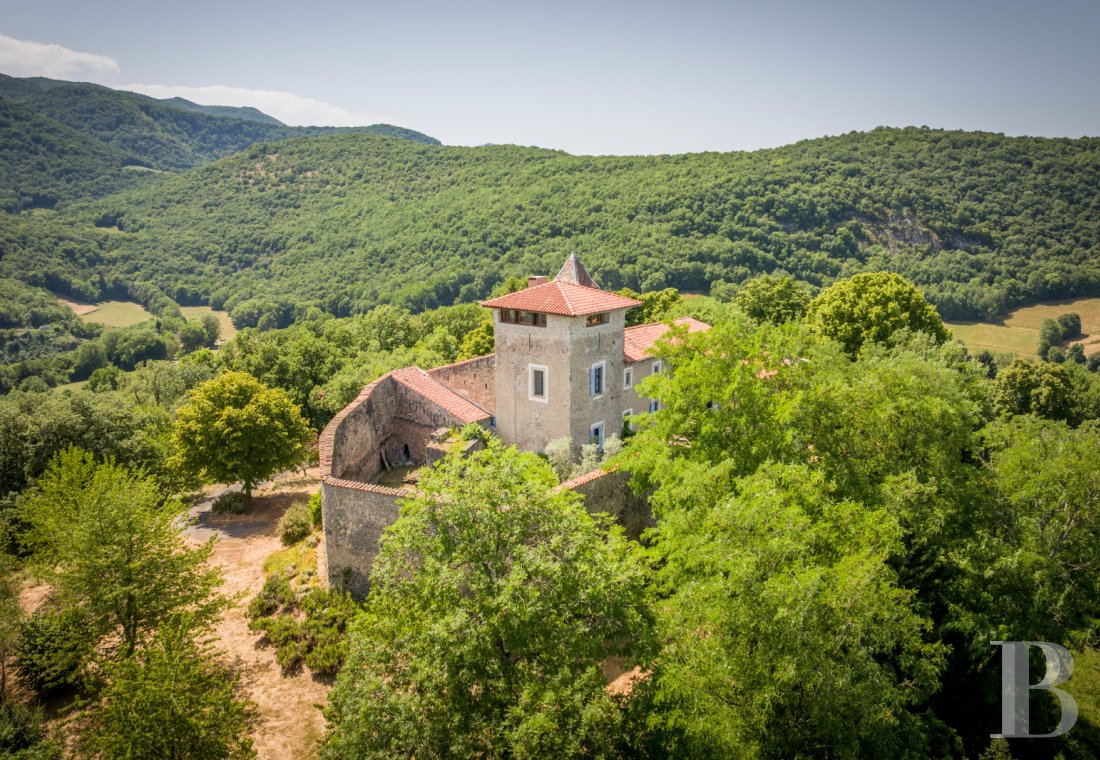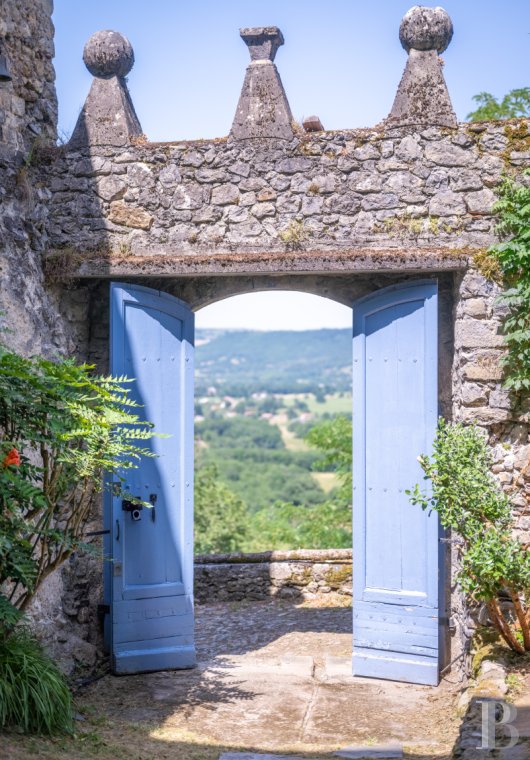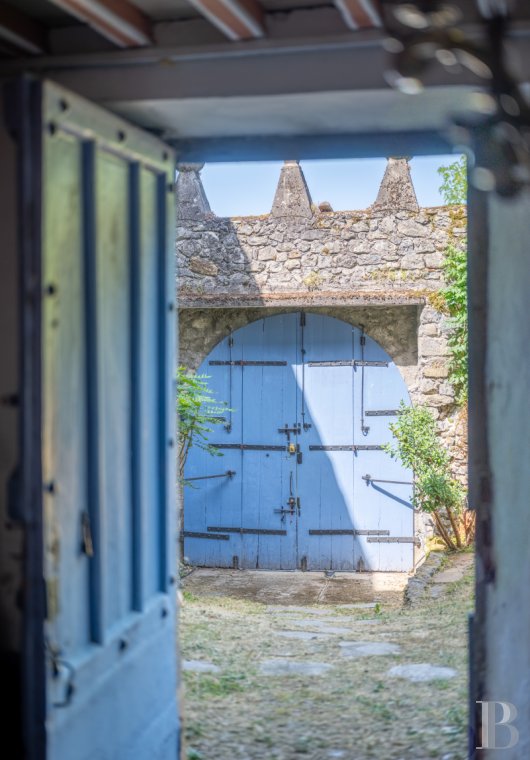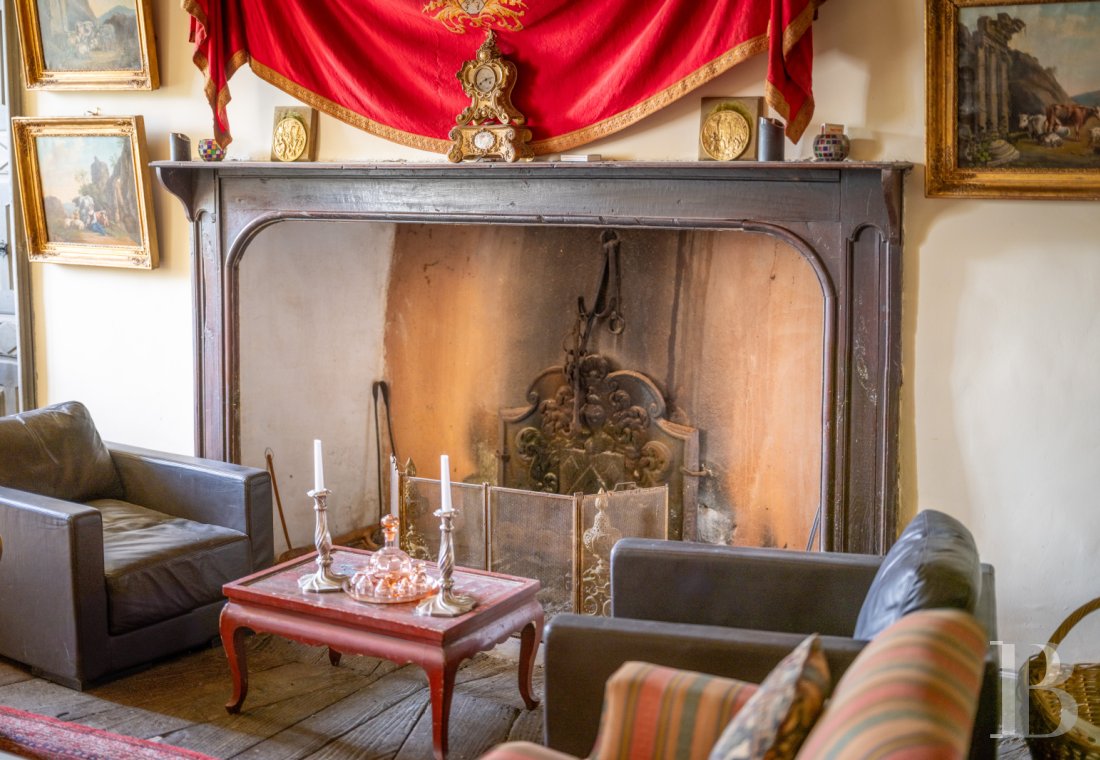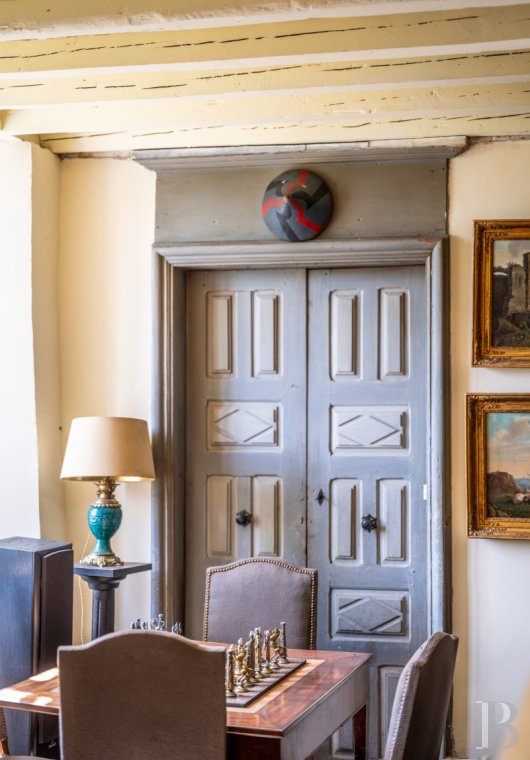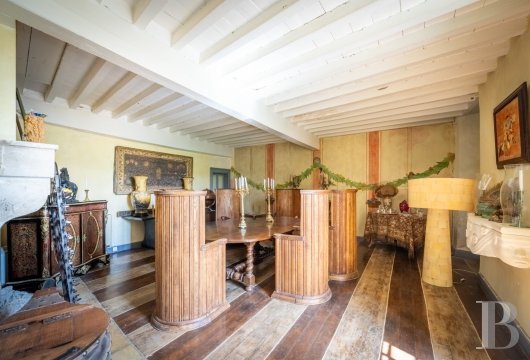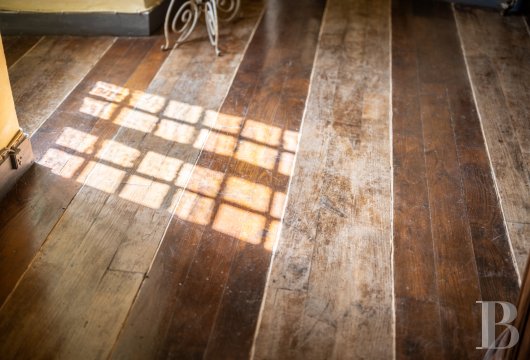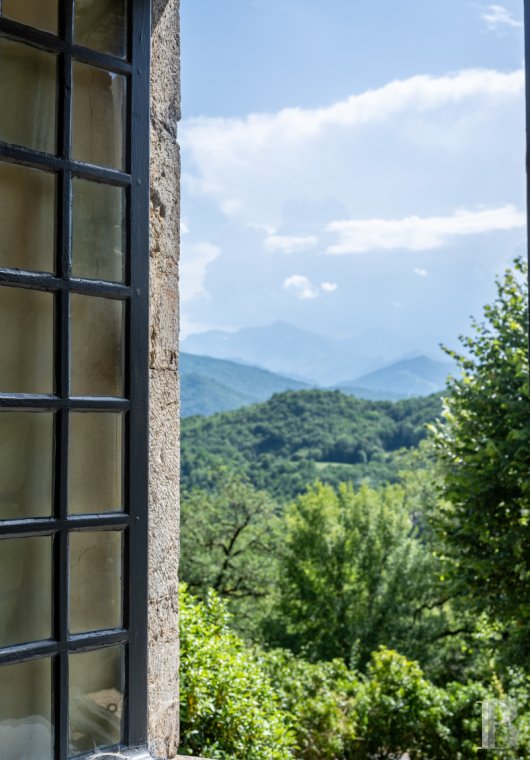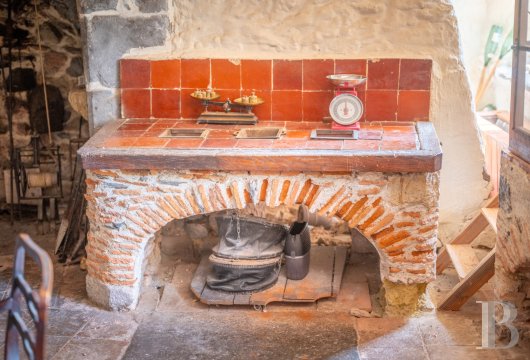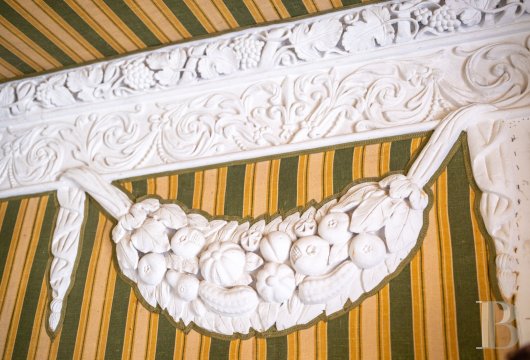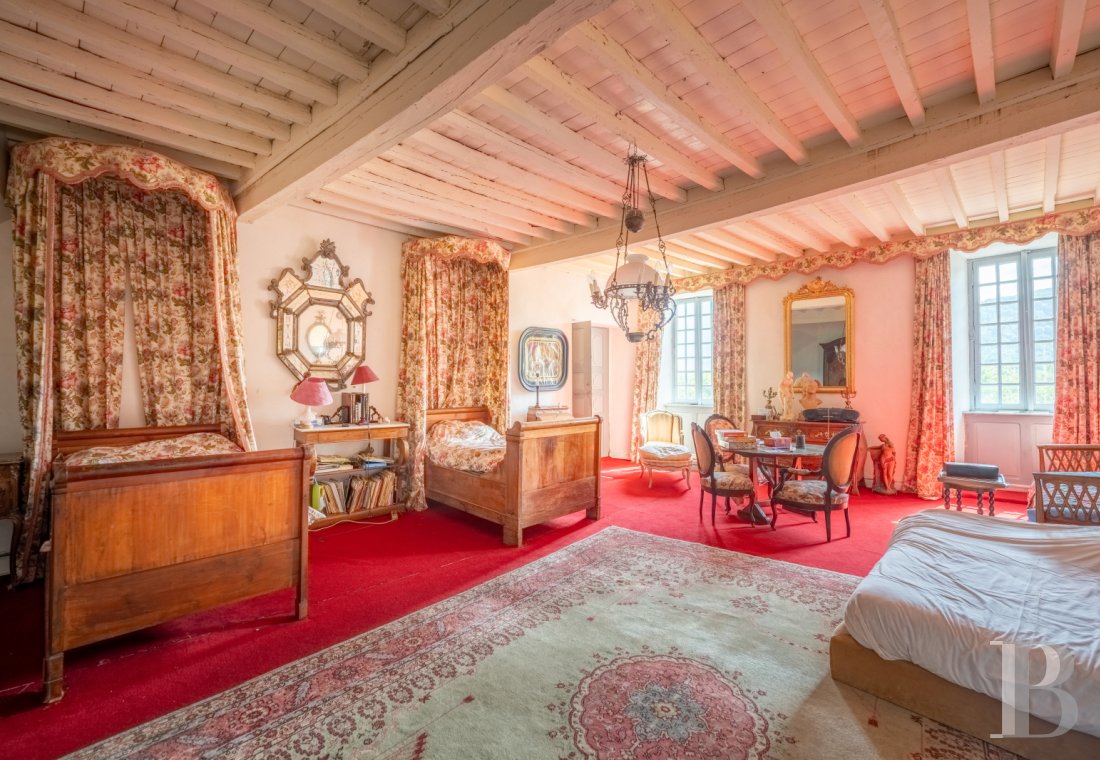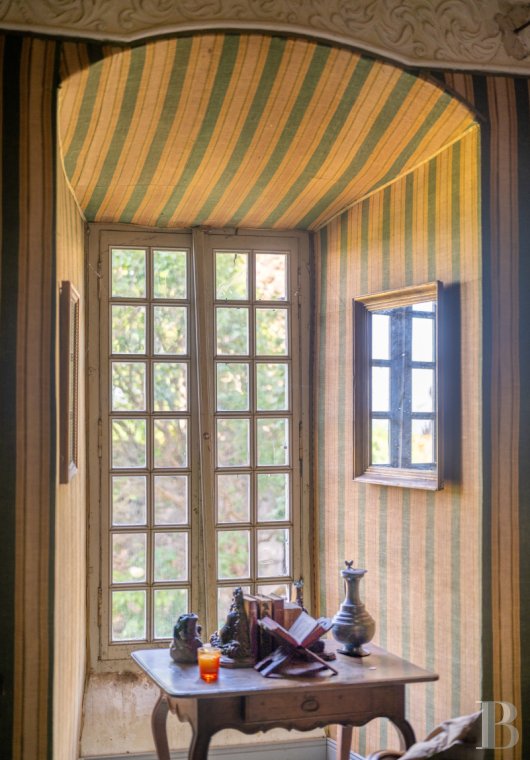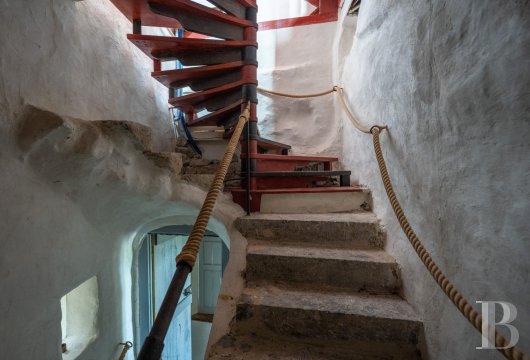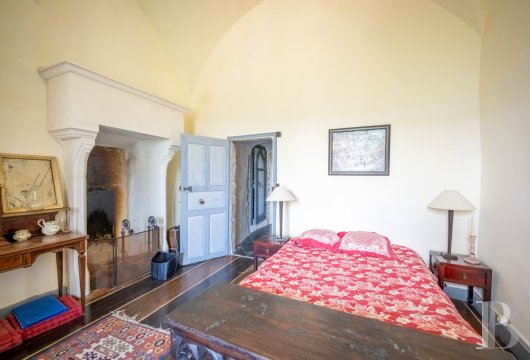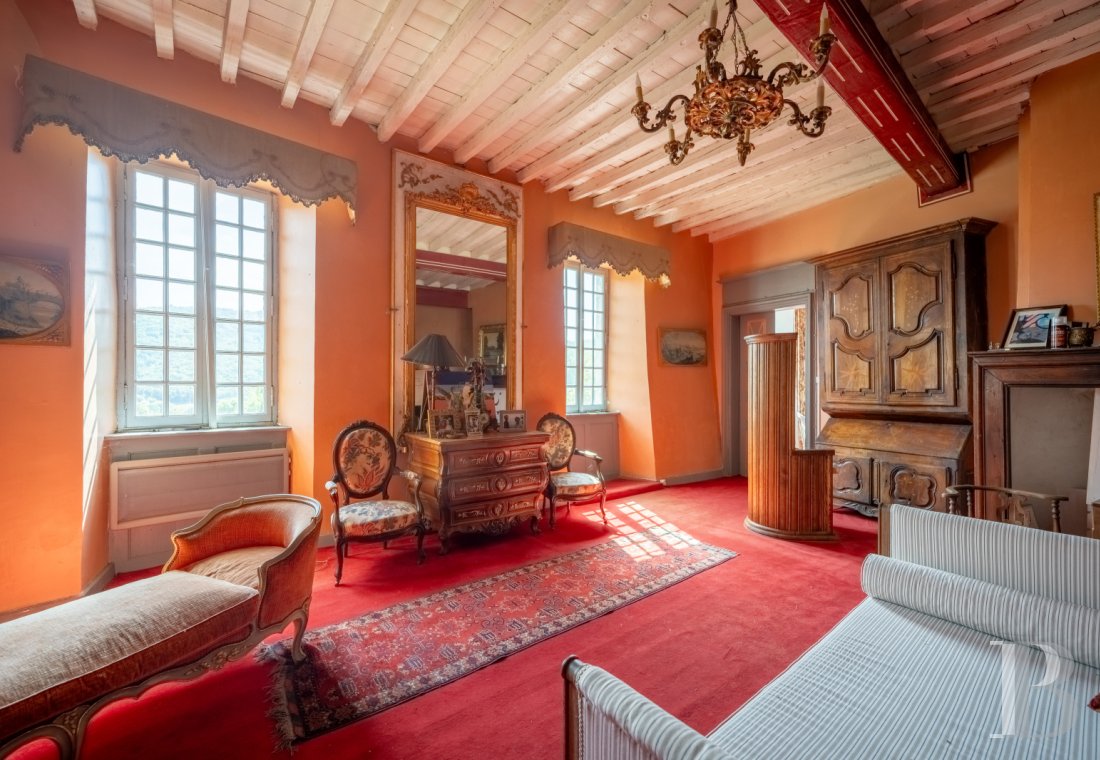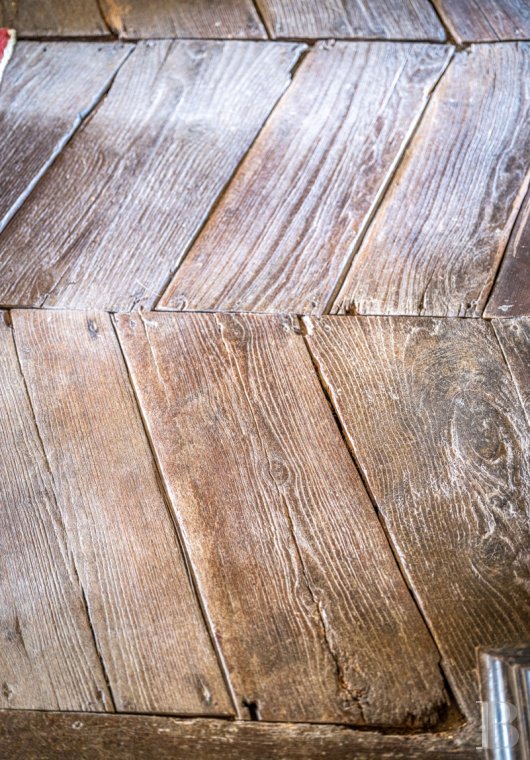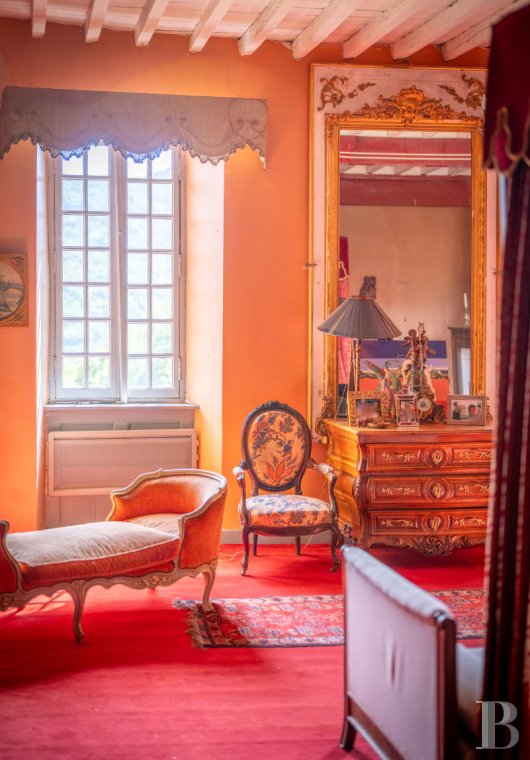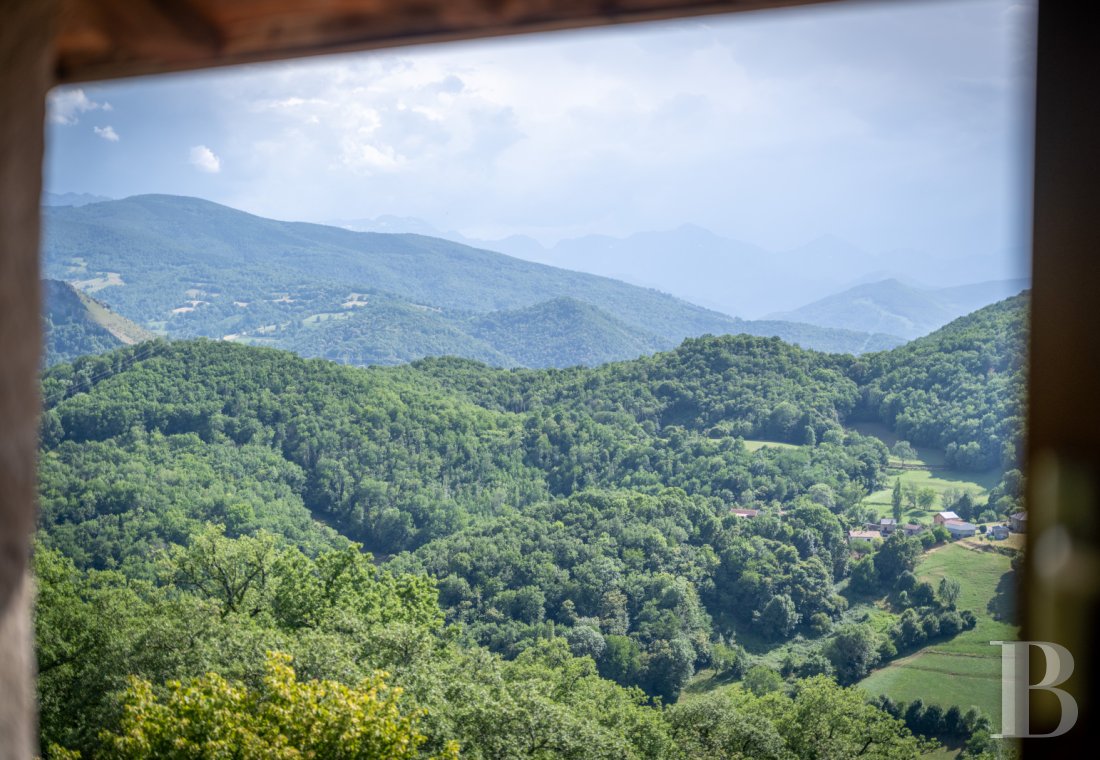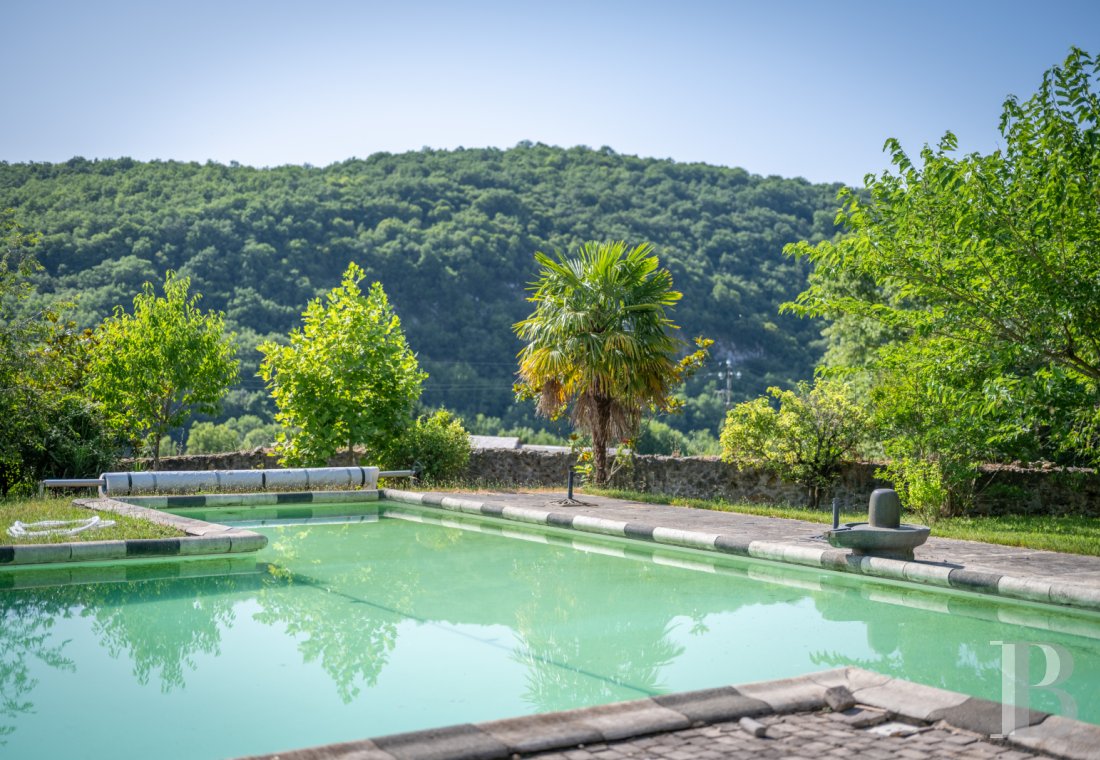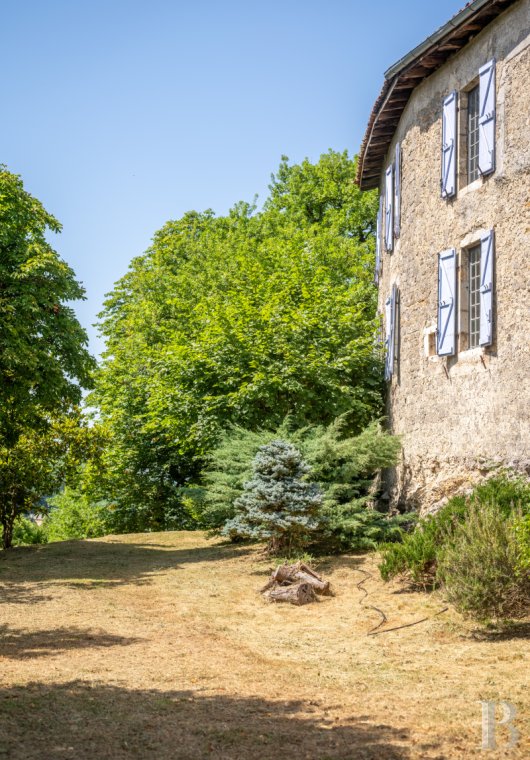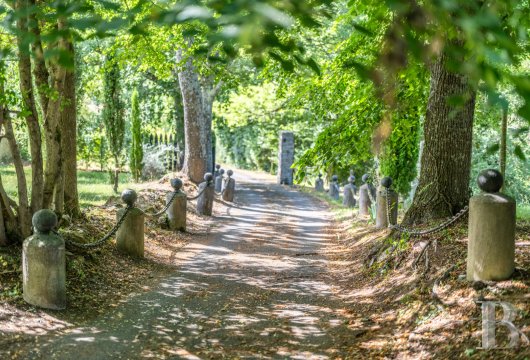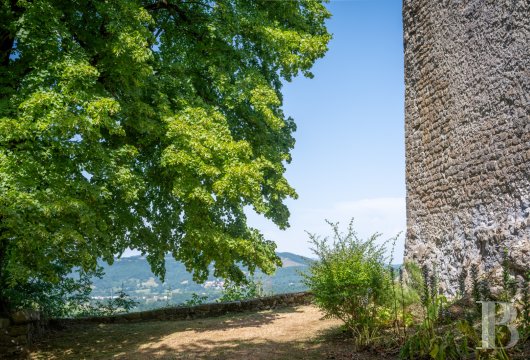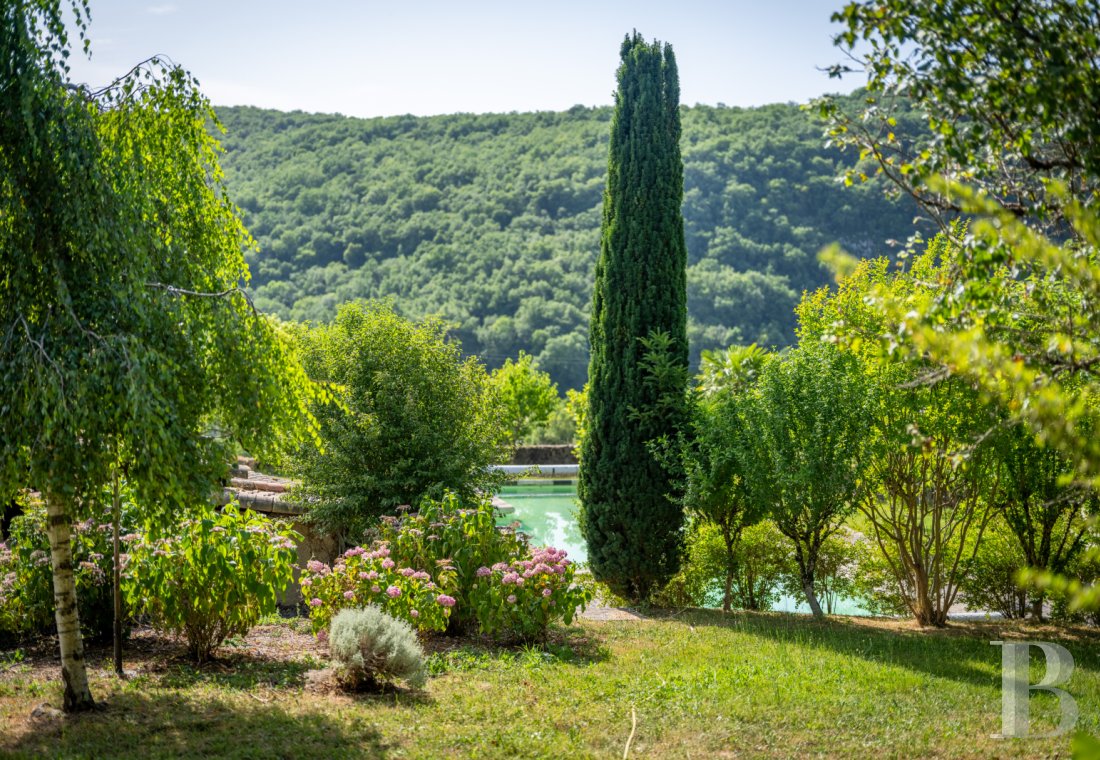historical monument and looking down over a valley by the Pyrenees mountains

Location
The chateau stands in a commanding position of strategic importance upon a rocky hill overlooking a valley, in south-west France’s beautiful Couserans province, once part of the historical county of Comminges. The chateau’s fortified walls bear witness to a medieval period marked by seigneurial conflicts and remind us of the defensive role that such strongholds played on the route from the city of Toulouse up to Pyrenees mountain passes. The local area, which looks out at the nearby Pyrenees mountains, combines unspoilt nature with a wealth of built heritage, made up of slate-roofed villages, Romanesque churches and quaint stone dwellings. Here you can enjoy traditional markets, walking trails and rivers abounding with fish. The property lies near the town of Saint-Girons, a historical crossroads in the valleys of France’s Ariège department. In this backdrop, nature and history are closely entwined. This enchanting environment has authentic charm, far from the bustle of modern life. Yet access to the property is straightforward: the road linking Toulouse to the Atlantic coast runs through the valley and a train station in the town of Boussens is only 30 kilometres away.
Description
The ground floor
The entrance door leads into a hallway with a floor of terracotta tiles and a ceiling of exposed joists painted red and white. On the left, a grey-and-beige double door leads into a lavatory with a sculpted shell-shaped washbasin that has a copper animal-shaped tap. From the hall, a wooden staircase leads upstairs. Further on, a twin door hides a tiny room for equipment. Opposite, an imposing studded door draws attention to a bas-relief above it that depicts four chubby children around a lion lying down beside a basket overflowing with fruit. This scene, at once naive and symbolic, seems to mark the door into the kitchen as an entry into a sustaining, fertile place that is almost sacred in its everyday use. In this kitchen, a monumental medieval fireplace, with a bread oven integrated into the stonework and culinary accessories, tells the story of centuries of dishes concocted here for feasts in the chateau. On the right, a door of solid wood leads to the guards room, a vast, practical space cut into the rock and punctuated with arrow slits. Today, it serves as a utility room and workshop. Another grey door leads straight from the hallway to a first lounge with raw wood strip flooring laid in a chevron pattern. This flooring goes well with a large fireplace of black wood. Two tall small-paned windows bring in natural light, showcasing the hearth’s plate bearing a coat of arms. A finely sculpted double door leads to a dining room. In this dining room, the wood strip flooring alternates between pale strips and dark strips. A stone fireplace, a ceiling of painted joists, and cupboards hidden by a fresco of garlands, fruit and ears of wheat create a unique atmosphere. Pantries and storerooms complete this ground floor.
The intermediate level
From the hallway, the staircase leads upwards via broad wooden steps with a patina of age. The worn edges of the stairs betray repeated comings and goings over the centuries. Halfway up, on an intermediate landing, a double door painted soft grey stands out from the pale rendering of the wall. Its plain panels with mouldings herald a secret space beyond it and an entrance into a seigneurial bedroom. Two steps lead into the privacy of a room with unique decor: a floor of old carpeting and fabric wallpaper with stripes of green and ochre tones that stretches up to a vaulted ceiling adorned with the same fabric. This decor creates a textured backdrop where subtle natural light is filtered in through a large window in an alcove. On the right, a painted wooden fireplace has kept its original decor: a sculpted trumeau panel, an oval medallion with foliage relief, fine mouldings and an upper strip ornamented with stucco grapes. The room’s atmosphere is a balance between the discreet formality of a master bedroom and the melancholic mildness of a room occupied for centuries. A door hides an unexpected flight of stairs dug out of the rock. These stairs lead down to a former underground passageway. The spiral staircase in its square stairwell has narrow steps painted red and white in a design as surprising as it is theatrical. At the bottom of this unique descent, there is a bathroom, dug out of the rock. It has a bath, a washbasin and a shower, set in raw decor of stonework with subtle modernity.
The first floor
From the intermediate level, eight steps extend the staircase up to a vast landing with dark wood strip flooring that alternates between broad and narrow strips in subtly varying tones. A small window with four panes, protected with an outdoor grate, brings in natural light. Several doors stand around this space. The first one – heavy, studded and almost square – leads to a bathroom. Its floor is covered with rectangular schist tiles. The walls, adorned with mottled pink, extend around an oval corner bath and a shell-shaped washbasin. The back wall is adorned with a mirror that reflects the whole room. A bidet completes this bathroom. You enter the room via a stone-floor hallway with a grey studded door set in a stone surround. Next, there is a large bedroom with a radial-patterned schist floor. A large double bed takes up the central space, opposite the windows: one facing the inner court, the other facing the landscape. Around the edge, mirrors and screens multiply reflections. The golden walls are sculpted with vines upon which sculpted birds and other animals are perched. In parallel to this bedroom, a wooden door leads into another spacious bedroom, bathed in natural light from two tall windows. A monumental wooden fireplace dominates the main wall. The ceiling of joists painted white has three beams embellished with red and brown volutes. At the other end of the landing, a large grey-and-white door leads into a bathroom. This little space connects to another spacious bedroom, which has a soft red carpet that muffles footsteps and underlines the true depth of the room. There are two old four-poster beds draped in flowery fabrics in ivory and dark red tones. Standing against the wall, they are framed between mirrors and historical items of furniture. In the middle of the room, there is a series of Louis XV style armchairs and medallion chairs around a round table, beneath a wrought-iron chandelier hanging from the white ceiling beams above. The room’s monumental wooden fireplace is over three metres in height. Its simple mantelpiece, its discreet trumeau panel and the warm tones of the plastering that surrounds it give this fireplace a calm aura. From this bedroom, you reach another one that is even bigger. Its four-poster bed in the middle gives the room structure. Two large windows punctuate the wall that faces this bed. They offer far-reaching views of the Couserans hills. The bedroom’s old woodwork, fabric armchairs, chaise longue and majestic gold-framed mirror between the windows make the room feel like a private lounge. Another fireplace, which is plainer in design, gives the room balance and visual anchorage. A vast bathroom, surprisingly coloured with hand-painted walls of bucolic, ornithological scenes, invites you to discover a vivid fresco produced in a naive style: there are herons, swans and ducks beside an imaginary lake in an idealised natural backdrop like in a dream. Diffuse natural light brings out the softness of the atmosphere here and underlines the impression of a separate space where time stands still. The last remarkable part of this first floor is a little passageway set back. It looks almost like an underground tunnel. Its floor slopes gently and its walls are close together, as if it were some forgotten service corridor. A stained-glass window with a coat of arms beneath a crown gives this space discreet solemnity, as if it were the last threshold to go through before reaching the chateau’s more private section.
The second floor
The staircase ends in a spacious bedroom with a ceiling of painted joists supported by a dark main beam. Natural light comes in through a small window and several doors lead to adjoining rooms. An entrance – the noble feature of a triple arch that edges the bedroom – lies beneath a stone garland and leads into a bathroom with a remarkable schist floor with lead inserts. Walls of exposed stonework, pale ceiling beams and a built-in bath form a whole that is at once rustic and unique, complete with a washbasin and lavatory. From this space, a schist-floor corridor leads to a neighbouring bedroom. Its rib-vaulted ceiling draws your attention. Two windows that are perpendicular to each other fill the room with natural light and a straight stone fireplace, no longer in working order, stands against one wall. Back in the main bedroom, side doors lead to vast loft spaces used for storage.
The tower
At the end of the corridor, a discreet door leads to a straight staircase, first cut into the stone, then extended with a flight of wooden steps painted red and dark brown. A rope fixed to the wall serves as a banister, helping you up this narrow ascent that seems to climb within the very thickness of the chateau wall. A first stop on this staircase connects to a little shower room in a corner. It has a shower adorned with wood, a washbasin and a lavatory, reached via a fold-out flight of stairs. Right at the top of the staircase, there is a bedroom in the tower. It offers a breathtaking panoramic view. A sliding glazed window and several other ones – some fixed, others openable – bathe this bedroom in an abundance of natural light and punctuate the room, while offering a permanent, sweeping vista of the surrounding scenery. The bedroom, highly perched as if it were hanging from the sky, looks out at the whole estate. Like a lookout or refuge where you can contemplate the valley, this bedroom seems to float above the landscape.
The garden
A rampart walk leads around the chateau, following its defensive walls. This path takes you all around the edifice’s immediate surroundings. To the left of the entrance track, an opening lower down leads to a swimming pool. This pool is T-shaped like two rectangles together. It is set in a stone surround, punctuated with darker stones, and is surrounded by a vast lawn. A spacious outhouse built against the embankment completes this delightful space. This spot’s landscaped ambience is unique. Around the pool, the vegetation is made up of Mediterranean and ornamental plants, including slender cypresses, palm trees, flowering oleanders and colourful hydrangeas. Lower down, clusters of perennials and various shrubs edge low dry-stone walls. From the garden, you can admire far-reaching views of the wooded valley, the trees in which form a green sea of hues that change with the changing light of the day. The pool, a gem set in greenery, is part of a separate – almost secret – haven, at once hidden by abundant vegetation and opened out to its surroundings, gazing out at the spectacular landscape. The combination of plants of different varieties, old stone walls and shadows cast by majestic trees creates a calm, refreshing atmosphere here.
The grounds
Beyond the enclosing walls and their immediate surroundings, the property covers around 15 hectares of land around the chateau. The dense, varied woods make up much of the estate. Oaks, maples and beeches dominate the environment, broken up with clearings where wild plants grow. Lower down, the land is structured into large plots that stretch over a gentle slope down towards the valley. The meadows, still used for livestock, neighbour fields with hedges that divide up the landscape. In this vast estate, the chateau towers as a central point of reference. From the higher ground, a breathtaking vista takes in the estate’s continuous scenery: a sweeping series of forests, pasture and crops, the diversity of which maintains both visual harmony and agricultural balance.
Our opinion
This remarkable chateau, an unshakeable landmark perched upon a rocky hill, stands like a sentry guarding a region with a long, rich past. With its timeless shape, towers and ramparts and its interior with monumental fireplaces, hidden staircases and floors shining with a patina of age, this majestic edifice tells a story that spans almost a thousand years. Thanks to the care given to it by successive owners, the chateau has kept all its medieval authenticity. Yet it is also a delightful place for holidays, memorable family meals and relaxing moments by the swimming pool. It is rare to find a property whose location, discretion and constancy tell the story of a region, a family and a relationship with the world with such precision. This gem is one of those rare places. At a time when this unique chateau will now be handed over, a sale of this property would not be a routine transaction. It would mean preserving age-old loyalty and protecting the edifice’s true soul, just like all previous protectors of this place have done over the centuries. It would mean maintaining the deep continuity of a unique jewel.
Reference 701280
| Land registry surface area | 15 ha 72 a 6 ca |
| Main building floor area | 550 m² |
| Number of bedrooms | 5 |
NB: The above information is not only the result of our visit to the property; it is also based on information provided by the current owner. It is by no means comprehensive or strictly accurate especially where surface areas and construction dates are concerned. We cannot, therefore, be held liable for any misrepresentation.

